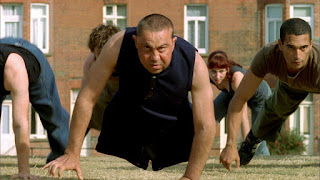The Trial
The Trial:
The book is a novel written between 1914 and 1915 by Franz Kafka and published posthumously in 1925. The tale of Josef K., a man arrested and punished by a distant, inaccessible authority, with the essence of his crime revealed neither to him nor to the reader, is one of his best-known works.
Synopsis of the 'The Trial':
The ground-breaking adaptation of Franz Kafka's The Trial by Steven Berkoff tells the tale of Joseph K., a man convicted of a crime that is never revealed to him. This visually striking portrayal, filmed live in Tokyo, is based on the 1991 production at the National Theatre in London and portrays the tortuous attempt of Joseph K. to uncover the facts behind his detention.
The trial is a novel written by Franz Kafka between 1914 and 1915 and published posthumously in 1925.
Steven Berkoff adapted several of Kafka's novels into plays and directed them for stage. His version of the trial was first performed in 1970 in London and published in 1981.
Themes:
- Relationship
- Injustice
- Authority
- Social status
- Sex and seduction
- Alienation and Control
Stage:
During the play the actors/actresses use screen frames in the play throughout the performance to represent more than one entity and to view various scenes in the play. Because when Josef is working at the bank the performers are in a single file line half facing to one side and they others are looing towards the other side and all simultaneously doing actions which show they are working e.g. counting money, signing papers and talking to each other most likely about business this is shown clearly to the audience as Steven Berkoff's idea was to use the screen frames to display that each worker is in their own little office space and to show different environments since the screen frames would show the beginning and ending of a scene.
Another scene that uses the screen frames to display a meaning is the beginning where Josef learns that he is under arrest on the morning of his thirtieth birthday, where he is unaware of his wrongdoing, and the two policemen begin to trash his house, and Josef is told to go to work as usual after the misunderstanding questioning. As the scene continues, as the police office mimed taking out drawers and throwing clothes on the floor, the rest of the group is in an arch that may represent windows / views of society looking down upon him because he has higher status or items.
Lighting/Sound:
The lighting remains a general wash with the pigment colour white during the show because it was only easy so that the spotlight can concentrate on the performers and help the viewer understand the plot clearly.
To display the different environments that existed in each scene, the sound effects used during the performance were used.
Costumes:
The costumes were fitting for the time period and, because there was an ideal appearance of what a woman could look like, men often wore suites and women would wear overly layered outfits. And with the black and white suites the male wore and the status of the female was correctly shown in the play, the maiden wore black and a white apron and the women who were romantic with Josef wore layered clothes to clearly display their status.
Techniques:
- Mime
- Slow-Mo movement
- Freeze frames
- Union of speech
- Exaggerated movement and speech
- Spoken stage directions
- Synchronised movement
- Breaking of the fourth wall
During the performance, there was a lot of use of freeze frames, particularly when there was a slight monologue from Josef as he tried to sort out the crime he was accused of by the two police officers and it showed the audience how he is constantly overthinking the situation.
When the ensemble walked through the screen frames to reveal a hallway, they were synchronised in movement and speed.



Comments
Post a Comment